Student Notable
Speculative Design Award
Core77 Design Awards 2023
Plants In The Late Holocene
"There are some four million different kinds of animals and plants in the world. Four million different solutions to the problems of staying alive."
— David Attenborough
In the Late Holocene, the ecology will be out of balance, causing the natural pollinators of angiosperms to be extinct. Plants will have evolved and relied on men as their pollinators by changing their shapes, structures, and functions to approach human life. Can men blend themselves into a part of the ecosystem and coexist with the plants?
This project will present a design and idea of how human and plants will interact hereafter.
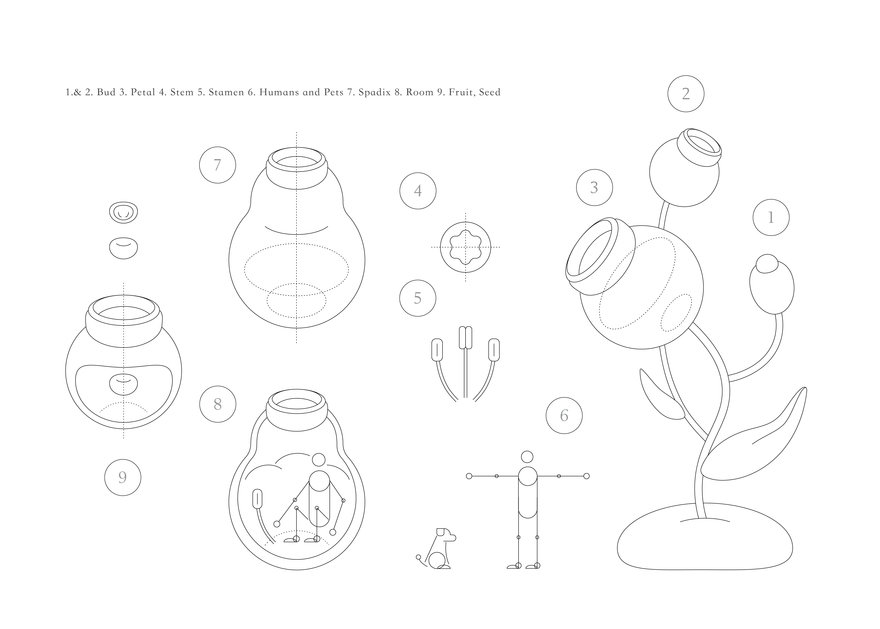
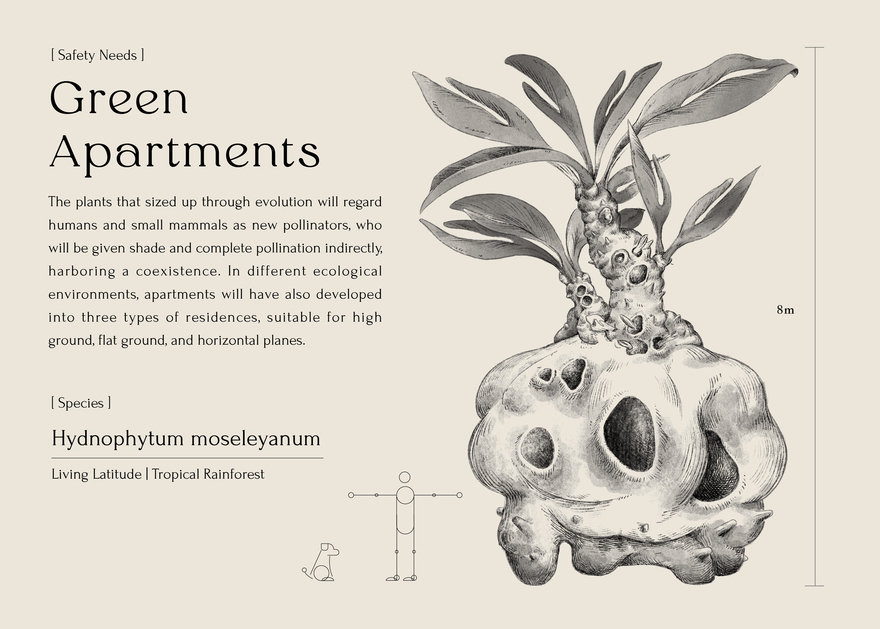
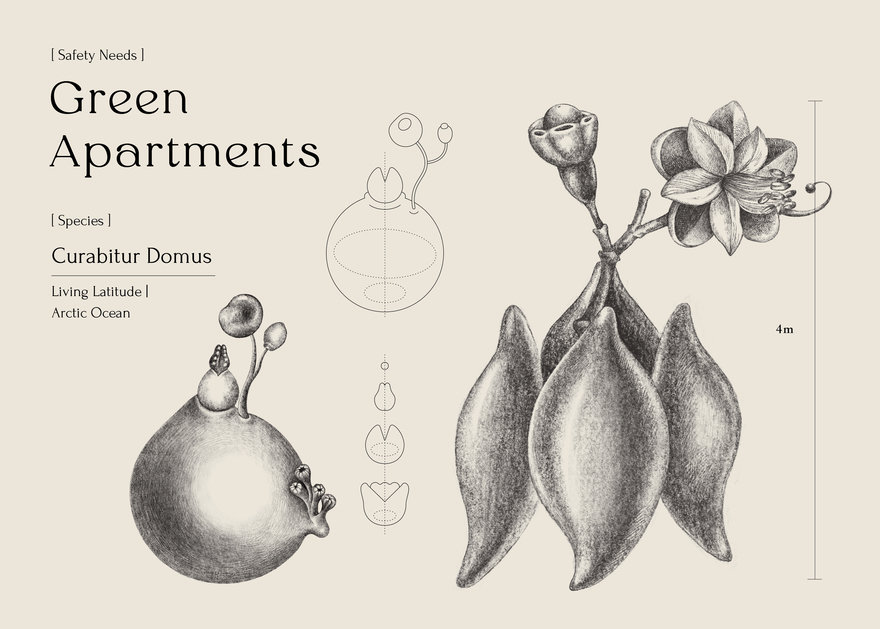
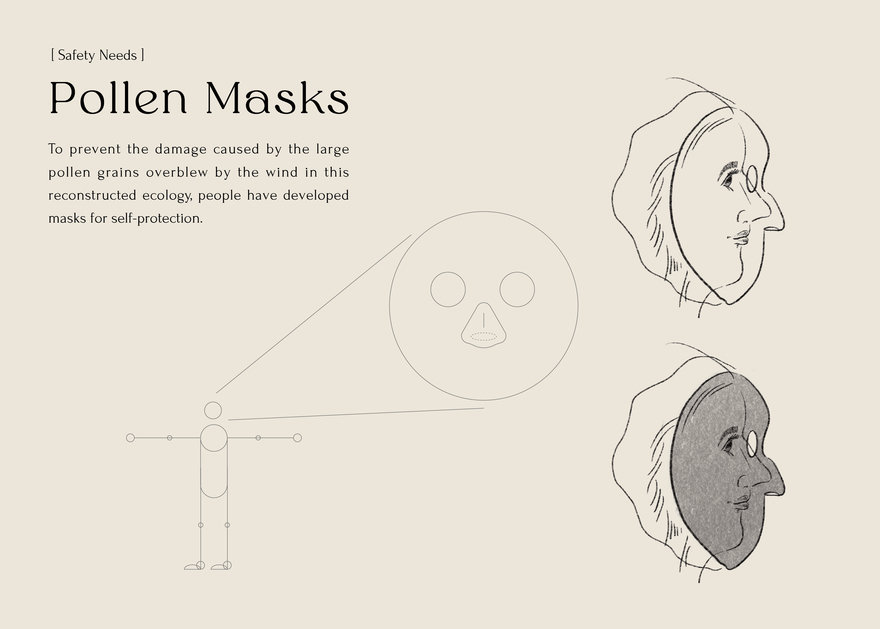

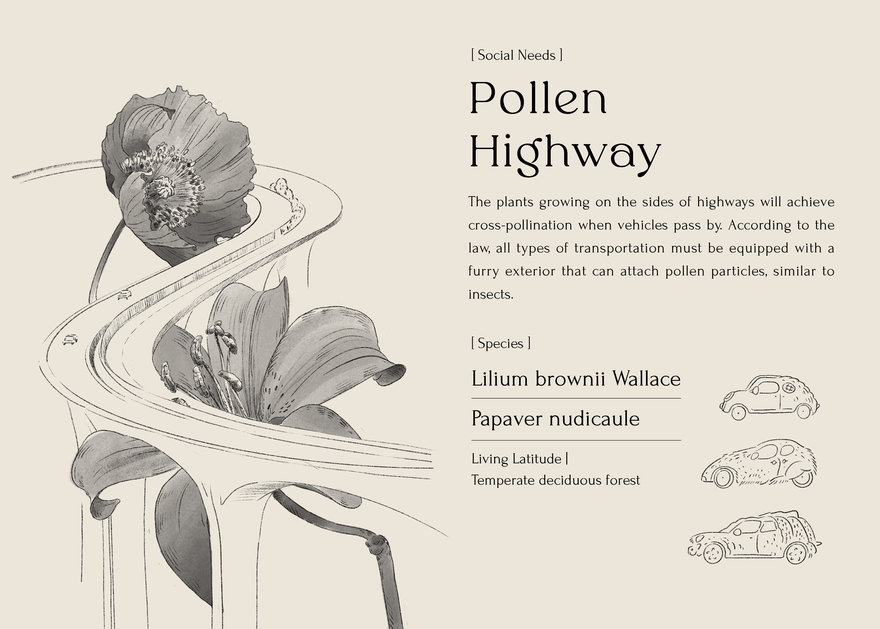
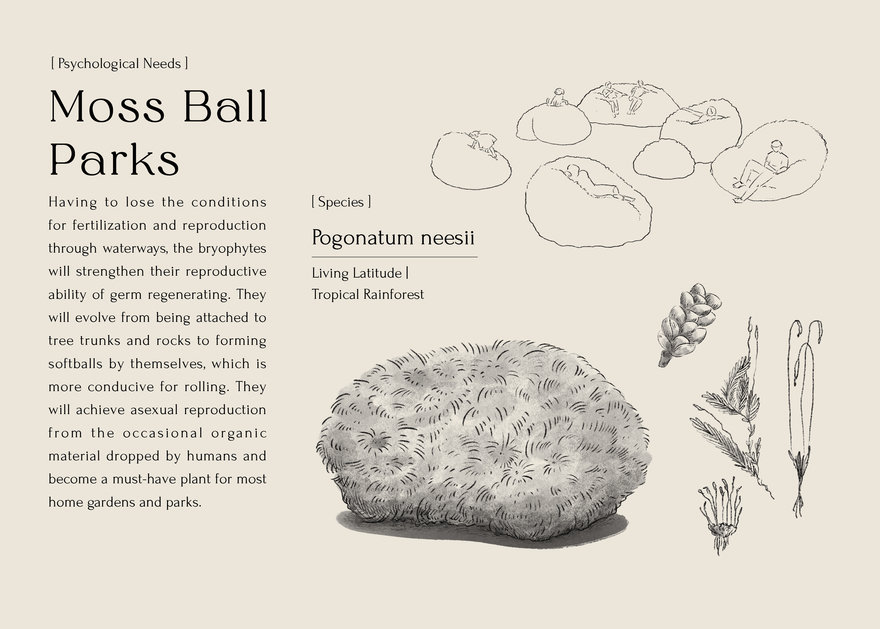


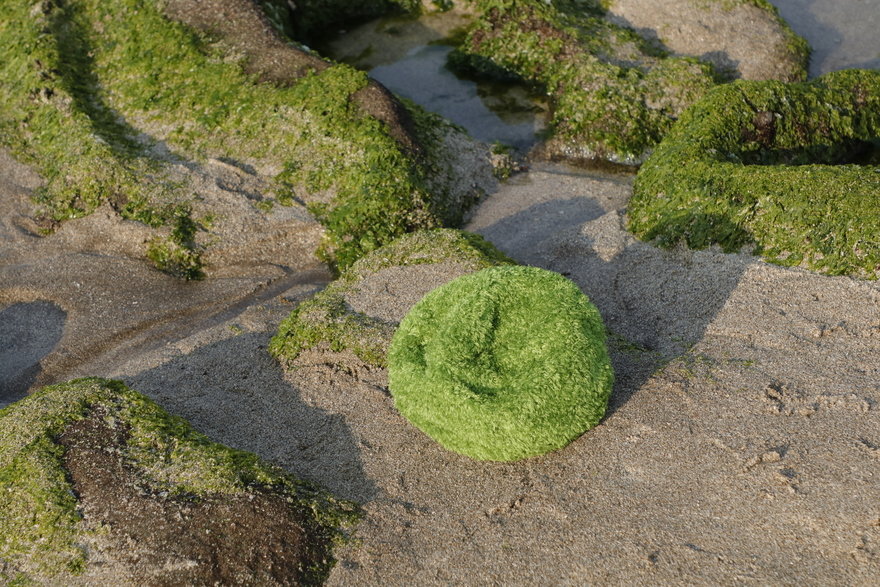

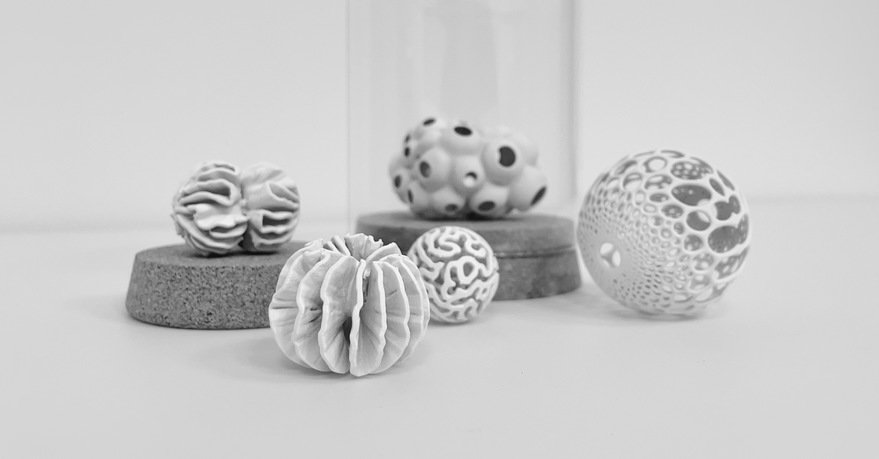
Interdependence Between Human and Plants
Scientists predicted that by the year 2100 AD, most lands on Earth will be uninhabitable. The stability of the Holocene is affected by the threat of an environmental crisis, forcing humans to reintegrate into the ecosystem while looking for a stable and sustainable lifestyle.
The Reproductive Mechanism that Changes through Evolution
According to academic resources, the reproductive mechanism of plants changes through evolution, with the pollination of flowering plants being the most exciting and diverse case. Looking at the changes in plant pollination, we can see that ancient gymnosperms were primarily wind-pollinated. Meanwhile, most modern angiosperms rely on animals and insects as mediators. This process may seem slow, but for the survival and expansion of genes, the way plants pollinate has, in fact, transformed to increase efficiency and seed setting rate.
Humans Becoming the Pollinators of Plants
In the modern world, the number of primary pollinators of flowering plants, such as bees and butterflies, is drastically shrinking due to various environmental factors. The ecosystem of these plants will be affected directly without the spread and pollination of such creatures. Will these plants' strong will for survival lead them to evolve and entrust their pollination process to humans?
In the Late Holocene, flowering plants will have changed their shapes, structures, and functions through evolution to adapt to human life. One of the best examples to understand these fundamental changes is the inflorescence of plants of the Thaumatophyllum genus, such as philodendron. This species heats up at night, forming a breeding ground for insects to reproduce while attaching them to pollen to complete the first step in pollination.
In the future, the release of methane, the rising concentration of carbon dioxide, and a large amount of polluting gasses, such as hydrogen sulfide, will form a strong magnetic field. Under the catalysis of this environment, flowering plants will evolve gradually to larger sizes; when they mature, they will form pot-shaped containers, providing humans with havens for resting and sleeping. Meanwhile, the flowers will be attaching pollen to people. Men will fill in the roles of the original insect pollinators when they move elsewhere and spread the pollen of the plants. Although the fruits formed by successfully pollinated flowers are edible, these plants still have fixed lifespans, forcing humans to find others while bringing the seeds along. Hence, planting more flowers will also become a huge motivation for people to spread the seeds.
Conclusion and Reflection
Toxic pollution can cause irreversible harm to human beings, yet plants have the ability to digest these poisons to purify soil and water. Biotechnology is the solution to many problems; nevertheless, its auspicious potential may not be fully discovered before it disappears. Perhaps we can prevent these environmental impacts by start imagining ways to restore this planet to its former glory.
In the past, nearly 10,000 years ago, hunting, gathering, and interdependence with nature were humankind's only options. Now, we are searching for a new sustainable way of living; reintegrating into the natural world seems to be an inevitable future. The existence of humans will be the alternative plan for plant reproduction, giving a whole new meaning to the presence of plants.
Reference and notes
Early History of Pollinators and Plants
Huei-Jiun Su (2004), "Duplication and evolution of floral B-class homeotic genes in eudicots assembly along altitudes in Taiwan"
Wang, Chih-chiang; Ou, Chern-hsiung (2003), "The Vascularplant Inventory of HuiSun Forest Station(2): Gymnospermae and Angiospermae(1) "
Lu, Fu-yuan(1984), "Contributions to the Dicotyledones Plants of Taiwan"
Kew The Royal Botanic Gardens (2018), "Flora: Inside the Secret World of Plants"
Stefano Mancuso, Alessandra Viola (2016), "Verde brillante. Sensibilit‡ e intelligenza del mondo vegetale"
Sharman Apt Russell (2016), "Anatomy of a Rose: Exploring the Secret Life of Flowers"
Core77 Design Awards 2023
- A/V & Photography Equipment
- Apps & Platforms
- Branding & Identity
- Built Environment
- Commercial Equipment
- Consumer Technology
- Design for Social Impact
- Emerging Technologies
- Furniture & Lighting
- Gaming Accessories
- Health & Wellness
- Home & Living
- Interaction
- Lifestyle Accessories
- Packaging
- Robotics
- Speculative Design
- Sports & Outdoors
- Sustainability
- Tools
- Toys & Play
- Transportation
- Visual Communication